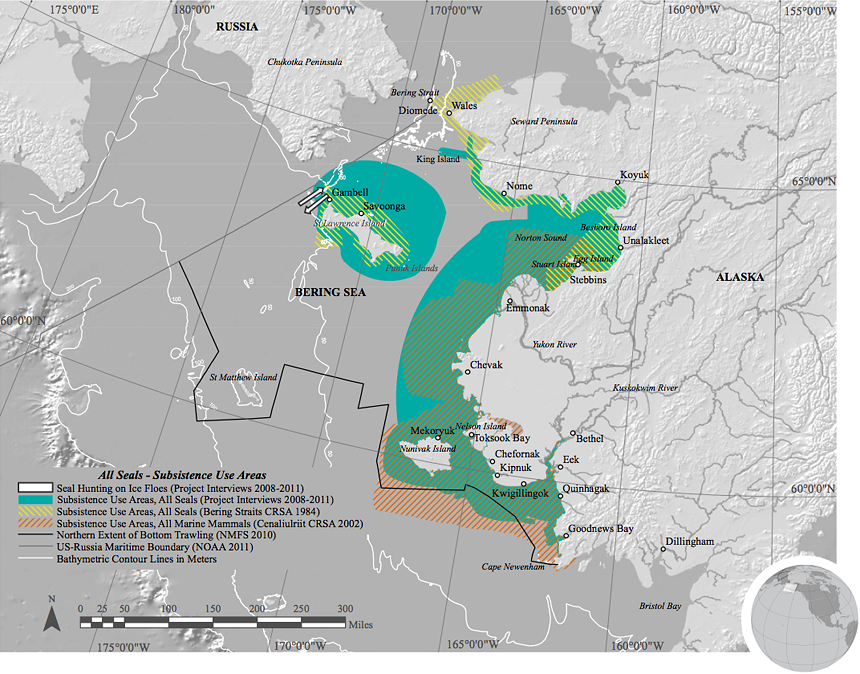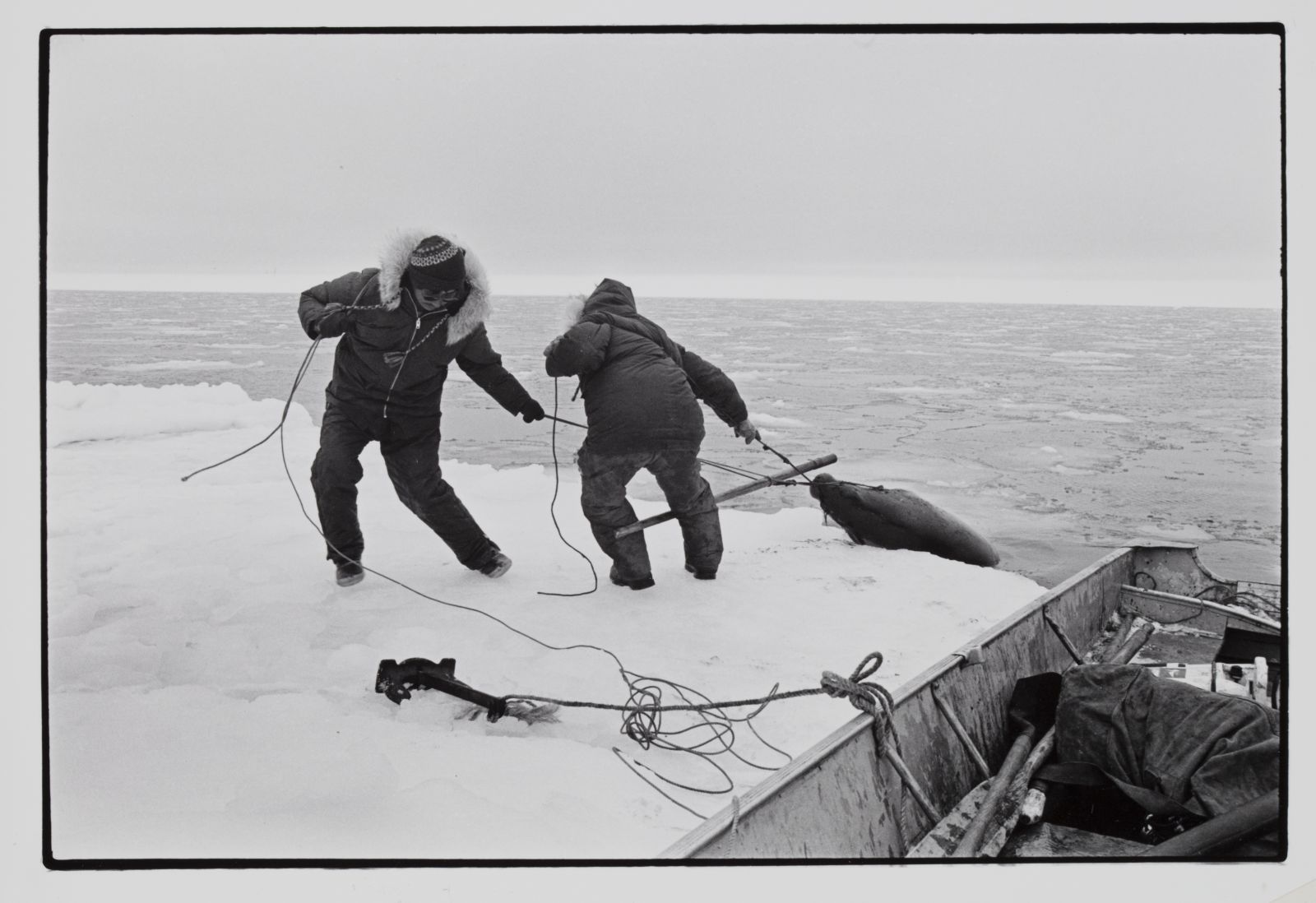Maps: All Seals: Subsistence Use

NOTES:
Arrows west of St. Lawrence Is. – Elders indicated that the location of hunting is influenced by strong currents and especially dynamic ice conditions in this area (Project Interviews 2008-2011).
Subsistence areas include those used to harvest bearded, ringed, spotted and ribbon seals as well as a) iigliq and qairaliq, two species described by Norton Sound hunters but not recognized by science (Huntington 2000) and b) hair seals, which are long-haired seals distinguished by hunters in multiple villages (Project Interviews 2008-2011).
Bering Strait CRSA area around St. Lawrence Is. – Straight western edge represents the end of the page on which data was drawn in the original source.
Cenaliulriit CRSA area near Emmonak – The right angle represents the edges of the USGS base maps used in the documentation process.
Seals are also taken opportunistically while walrus hunting farther offshore.
Cultural Practices

Seal hunting depends on the ice. Depending on ice conditions, if the ice is farther out, we have to go farther out too to get to the ice, that’s where the seals are. They haul out on the ice.1 Edward Shavings—Mekoryuk
When and where seals are hunted is opportunistic but depends mostly on the location, condition and movement of ice, weather and the habitats that seals utilize during different times of the year.2 For example, bearded seals are most often hunted in the spring when the pack ice is receding.3 Ringed seals occupy shorefast ice and thus tend to be caught in greatest numbers during the winter.4
Seal hunting brings community members together, not only by the cooperative nature of the hunt, but also through the distribution of meat and oil. When a seal is taken, its meat, oil and organs are shared with extended families, the larger village community, and often to neighboring and distant villages as well.5 Seal products are usually shared first with elders in the community and then with family members and those who do not have a hunter who can provide for them.6 When a young hunter catches his first seal the entire animal is shared among the community and the hunter does not keep any portion for himself. In some villages, various festivities are held.7,8
Seal meat, blubber and oil make up a significant proportion of village diets, especially during winter months. Oil rendered from seal blubber is used as a condiment, preservative and medicine.9 Seal oil is an excellent food for the demanding Bering Sea winters because it is packed with calories, fat and vitamins. Seal oil is pure fat, but it does not predispose to coronary vascular disease because it is poly-unsaturated. The iron content of seal oil and other marine mammal products is also extremely high and can be 10 to 11 times that found in an equivalent measure of beef.10
Seal skins serve a variety of purposes. They are used to make parkas, pants, boots, boot soles and seal gut rain coats, which are exceptionally warm and waterproof. Bearded seal hides are used to cover traditional skin boats.11,12 Although today people are using more store-bought clothing, the time may come to return to traditional materials.13
There are traditional customs followed by hunters to show respect for the seal so that future hunting will be successful. Some hunters or women processing seals pour fresh water in the seal’s mouth or put Labrador tea in the nose.14,15 Another custom after a seal is taken is to put the seal on the ice and face it out toward the sea “where it once belonged.”16
Important Seal Habitats:
Bearded Seal
Ribbon Seal
Ringed Seal
Spotted Seal




